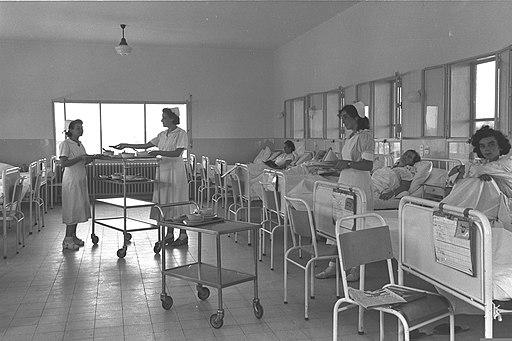Hospitals no longer have those open wards of the ’40s and ’50s, but the idea of keeping similar types of patients together persists. A new study asks an age-old question, does location matter? Spoiler alert – yes.
A bit of background
While there are multiple intensive care units designated for patients with cardiovascular or respiratory disease or just the critically ill, the bulk of patients do not need such close monitoring and are placed in medical or surgical (med/surg) units keeping similar problems in the same general area. Unlike surgical patients who frequently undergo elective surgery where their admission and bed assignment is planned; medical patients most frequently are admitted to the hospital urgently or emergently, without reservations, making planning for their placement more of a problem.
After a patient is admitted to the hospital, an experienced clinician, usually a nurse, determines their "bed assignment" - where in the hospital they should be placed, attempting to match the acuity of their needs with available resources. And assignments are made quickly; waiting in the Emergency Department or post-operative recovery can result in inadequate care and backing up the system, like an obstruction on a highway offramp.
Placement is an imperfect science, more an art. It is most important to match patients to the acuity of their needs, placing a critically ill patient in a regular room has already been shown to reduce the quality of care and patient outcomes. Mismatches here are called “off-level placements.” But, what about the vast majority of patients, who are recovering from a specific illness or surgery in a more routine way. Does it matter whether you put an adult on a pediatric floor because that is the only place a bed is available, or can you safely place a post-op surgical patient on a unit caring for patients with pneumonia, abdominal pain, or anemia (off-service placement)?
The most persuasive clinical argument for keeping similar patients together is that the nursing staff is more experienced with their problems, has a better understanding of the typical path to recovery, and notices the early deviations that if not corrected turn into more significant issues and complications. Having organized the nursing unit around similar patients permits additional patient care, like physical therapy, nutritional consultation, and discharge planning to be unit-based. As a result, consistent teams care for similar patients and have multiple opportunities to communicate and coordinate.
The study
The question being asked, does “off-service” placement result in inferior care? The researchers looked at 25,000 admissions over a 12 month period involving 18,500 patients. The quality of care was measured by four proxies, length of stay, readmission, in-hospital deaths, and “trigger events.” A trigger event is a call for additional help, prompted by objective clinical measures, like an abnormal heart rate or rate of breathing; or can be a clinical concern, the intuition born out of experience.
The results of being placed off-service:
- About a one day increase in length of hospitalization
- A 13% increase in readmissions
- No change for in-hospital deaths or trigger events.
Good news, the off-service placement doesn’t result in acute harm, but what about the extended hospitalization and higher readmission? Using the unit's designation as medical or surgical as a proxy, the researchers suggested that these “inefficiencies” were not due to the mismatch of nursing skills, i.e., a surgical nurse caring for a medical patient, and vice versa. That longer stay and higher readmission rate correlated with the physical distance between the home unit and the patient’s off-service placement. Why would that be the case?
The answer here is that unit-based care doesn’t travel and do “house calls” well; no surprise, it is not organized in that way. In connecting the dots, the researchers suggest that an off-service patient is seen a bit less by the attending physician and that communication amongst the care team is hampered. Some of this problem could be corrected by assigning team members, other than nurses, not to the unit, but to the patient’s cared for by specific physicians although that would inevitably raise its own set of assignment and coordination issues. It is tough wringing every little bit of slack and buffering out of a system, be it assembly-line manufacturer or healthcare.
Two final factoids. Off-service placement increased as hospital “busyness” increased, more patients, fewer beds, more dislocation. That may make regionalization of care, a proposed solution to physician shortages and inexperience, a more significant logistical problem than anticipated. More importantly, no computer algorithms or artificial intelligence was utilized by those nurses handling placement; they did a great job clinically, getting everyone into beds without any apparent decrement in their acute care based on their training and experience.
Source: Capacity Pooling in Hospitals: The Hidden Consequences of Off-Service Placement Management Science DOI: 10.1287/mnsc.2019.3395




